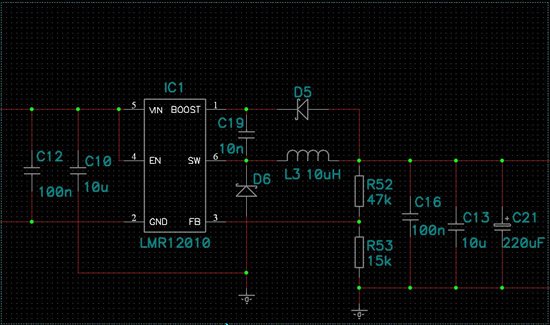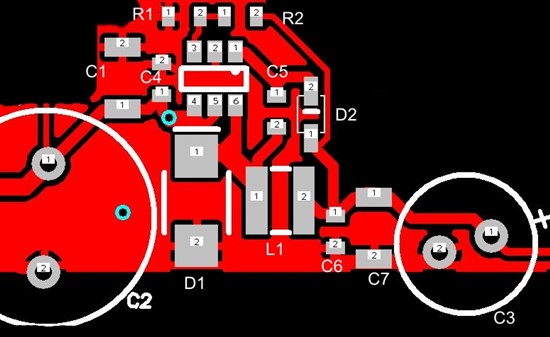Hello,
I have problems using LMR12010. It's very simple step down application from 10Vdc input to 3.6V output.
I followed app note for LM12010 with input capacitors, output capacitors and other recommended parts.
Evrything works fine when I have at least 100 ohm load (resistive). When I increase the load (1kohm) output
voltage becomes unstable (looks like pumping output signal from approx 3.2V to 3.9V). This saw shape signal
(fast rise and slow drop) has frequency dependent on load. It is like 30Hz at 150ohm load and rises when
I increase load resistance. Amplitude of this ripple is not affected by a load. Only frequency is affected.
I use 1000uF as a bulk input capacitor plus 100n and 10uF ceramic. Inductor is 15mH tiny power inductor, output
capacitors are again 100n and 10uF caramic plus 220uF ELCO. FB resistors are 12k and 47k.
Any idea what might be wrong?
Thanks in advance
Humar J



